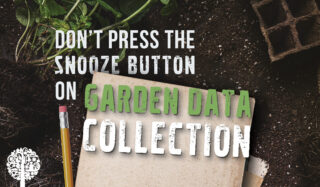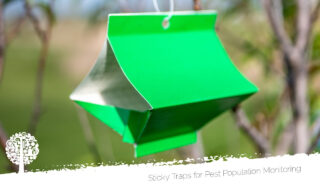

Gathering and examining data on your growing environment can have a powerful impact on understanding how various factors influence plant yield or the expression of their genetic traits. Data is information that will put your finger on the pulse of your garden or farm, and gathering it doesn’t have to be a daunting high-tech solution. Don’t immediately leap to greenhouse computer brains and field sensors. My great-grandmother kept a simple log of our family farm, noting the daily weather, farm activities, crop issues, and other significant events, including the births of the children in our family. I treasure that journal to this day. So, get excited about gathering data! Connect with your plants on a deeper level, and, who knows, maybe you’re leaving a family legacy. Here are some tips and tricks on collecting great data and leveraging that information to grow healthy, beautiful plants.
Document Pest/Disease Emergence
When do the Japanese beetles start attacking your roses? When do the cucumber beetles arrive to shred up your leaves? When does your squash get powdery mildew in the fall? Knowing when a pest or disease shows up is paramount to preventing them in the future. Log who you see and when they show up to inform future pest forecasting.
Daily Temperature, Humidity, and Weather Events
Not every year will have the same weather at the same time, but documenting and learning the temperature and weather patterns will help you predict the arrival of pest and disease pressures in the future. For example, how many days of 50℉ weather does it take before I see cucumber beetles attacking my plants? If you note these environmental variables, you can begin to correlate them with a pest presence. Once you know you’ve hit the environmental window that favors the life cycle of your pest or disease, you can take a preventative approach to management. Crushing a problem before it begins is much easier than reacting to an acute problem.
Sticky Traps for Pest Population Monitoring


These sticky traps are commonly misused to control flying insects such as aphids, leaf miners, fungus gnats, thrips, white flies, black flies, midges, and other flying plant insects. Although they may do a good bit of population reduction, sticky traps are more than just a trap! They are there to catch insects so you can identify who they are and how many are in your garden. Often, you will see sticky traps with a little grid printed on the trap; this is for counting. If you count the number of insects weekly and subtract the previous counts from the most recent count, you can tell how severe an infestation is and if a pest population is increasing or decreasing over time. This can help you understand if a treatment you might have tried is working. Also, sticky traps won’t necessarily solve your pest problem. For example, if you have a fungus gnat issue, sticky traps won’t solve your problem if you are not addressing soil moisture levels. Do not rely on them to obliterate a pest issue. Think holistically about the pest life cycle and attack them where they are vulnerable.
Soil and Plant Tissue Testing
Many home gardeners do not want to carry the expense of lab testing. The stakes are lower for the hobby gardener, but if you are a commercial producer of any kind, you will want to understand how your nutrient regimen affects your crop. Getting a side-by-side soil-saturated media extract (SME) test along with a plant sap or plant tissue test can be powerful in unlocking your understanding of the soil-plant interface, crop performance, and fertilizer utilization.
Soil pH, Moisture, and Soil Electrical Conductivity (EC)
You can gather these data points in the field in a low-tech approach with relatively inexpensive store-bought meters or send a sample to a lab for measurement. Hobby gardeners and commercial producers will get a firm understanding of field conditions with these data points, which is essential because these variables dictate the ability of a crop to properly uptake the nutrients.
Don’t Over Collect Data


Meaningful data but less data is better than tons of useless information. Over-collecting data is a very easy mistake to make. This habit can be a waste of time and can get overwhelming. Instead, approach your data collection with a strategic attitude. Know why you are collecting a particular piece of information and have a plan on how you are going to use it. How will you aggregate the data to see patterns? How will you look back and analyze trends over time? These questions will help dial in your method of documentation. Is it a spreadsheet, a journal, or a bunch of notes scribbled on a calendar? Any of these methods will work as long as you have a clear plan on which data you need and how you intend to access that information in the future.
I know data collection can sound like a snore-fest or feel cumbersome, but I believe it can be empowering and informative. Farmers have always thrived on their observations because it connects them more deeply with their production. Data can be a powerful anchor to your observations and provide vital information. So unleash your garden nerd and document your amazing observations because it will pay off!
